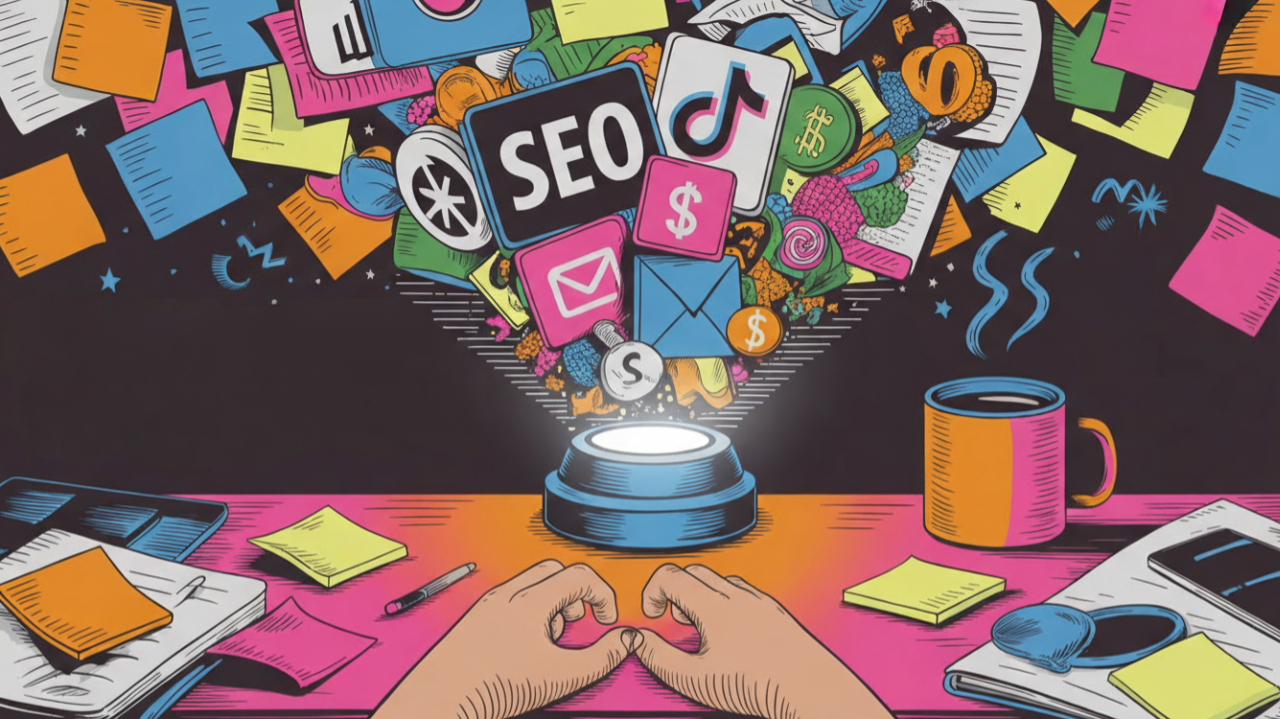5 Social Media Marketing Strategies for 2024
Social Media continues to be a powerful platform for businesses. It provides a perfect stage to share your brand story, engage with customers, connect with prospects, and gain invaluable feedback.
Here are the areas your social media strategy should consider in 2024:
- Building Brand Awareness and Reaching New Customers
- Social Media Advertising
- Short-Form, Long-Form Video Content, and Live Audio Rooms
- Virtual Reality and Web3
- B2B Influencer Marketing and Social Responsibility
1.
Building Brand Awareness and Reaching New Customers
Increasing your brand awareness isn't just about marketing and advertising. A well-planned social media strategy will help you build relationships with customers, stimulate their engagement, and encourage them to share your content. Here's how you can implement this effectively:
User-Generated Content (UGC):
UGC ranges from photos, videos, to reviews, and more, provided by your users rather than your brand. It adds authenticity to your brand image as it is driven by the customer's experience. By encouraging and rewarding user-generated content, you can increase brand credibility and prospective customer's trust in the brand.
Content Marketing:
The focus isn't just to promote your products or services but to provide value to your audience. This might include tutorials, expert advice, industry news, or anything else that your audience will find helpful and interesting. Creating high-quality content improves brand visibility and credibility, and also boosts SEO efforts.
Develop a Brand Voice:
A distinct, consistent brand voice helps humanise your brand and connects more effectively with your audience. It should align with your brand identity and reflect in all your posts, replies, and engagements on your social channels.
2. Advanced Social Media Advertising
The fading of cookies due to privacy concerns means there is more focus on reaching users organically and directly. Consider utilising text-only posts, which provide direct communication and engagement with customers as a highly effective alternative to visual ads. These ads can appear more personal and less “salesy”, leading to higher conversion rates.
3.
Short-Form, Long-Form Video Content, and Live Audio Rooms
Short-Form:
Bite-sized, entertaining videos are perfect for grabbing short attention spans. Platforms like TikTok and Instagram Reels dominate this space. The key is to produce highly engaging, creative content that conveys a direct message about your product or service.
Long-Form:
There will be a growing demand for longer content in 2024. More in-depth, comprehensive video content allows for the exploration of complex topics, educational series, webinars, or interview-style videos. By educating your audience in-depth, you increase perceived value which, in turn, increases trust in your brand.
Live Audio Rooms:
like ‘X’ Spaces, Facebook Lives and LinkedIn Audio Rooms offer more personal, real-time engagement. They foster conversation and collaboration, making them perfect for Q&A sessions, discussions, or even live podcasts.
**There are few better ways to connect with your audience than through human voice. Live audio offers a human element that most forms of content do not, as well as opportunities to chat one-on-one with your audience members.**
4.
Social Selling
Social selling will continue to mature as brands and retailers recognise the synergy between physical and digital retail.
Today, social media is a key part of the buyer journey. If you're not using social selling to reach your audience, you need to start now.
Here are six areas we expect to see within social selling in 2024:
Social Media Platforms are the new Search Engines:
The influence of platforms like TikTok and Twitter is growing, posing a significant threat to traditional search engines such as Google. Instead of browsing products or services on search engines, consumers, especially Gen Z, are turning to these social media platforms to make shopping decisions.
Dominance of Text-only Posts:
Text-only posts could be a significant hit in the coming year. This highlights the continuing importance of written content in grabbing consumers' attention. We've found some fascinating insights and analytics in testing this recently.
Rising Importance of Video Content:
The push for video-first content seems to be strong. Statistics indicate that social video content generates significantly more shares compared to text and images.
Shift in Engagement from Feeds to Direct Messages:
There's likely to be a shift in engagement from feeds to direct messages (DMs), implying a more personalised approach to selling.
Increased Adoption of AI:
Artificial Intelligence (AI) is increasingly becoming inevitable in social selling. Marketers and brands that leverage AI effectively are likely to thrive. It provides streamlined customer support using AI-powered chatbots, predictive analytics for understanding future customer behaviors, and social media listening tools to keep track of conversations and mentions around brands. AI also enhances ad targeting, which contributes to more successful advertising campaigns.
Check out our recent blog "Artificial Intelligence: Unleashing New Opportunities in Small Business Marketing"
Sustainability and Social Responsibility:
Brands focusing on sustainability and social responsibility could gain more traction in social selling. This typically involves committing to sustainable practices, using authentic storytelling to highlight commitment to social causes, collaborating with non-profit organizations, and being transparent about the brand's sustainability efforts. By aligning their values with customers, brands can build trust and loyalty.
5.
Augmented Reality (AR) and Web3
Augmented Reality:
AR technologies on social media can offer virtual try-ons for e-commerce brands or interactive games to increase consumer interaction. AR not only enhances user experience but also lets consumers learn more about products leading to informed purchasing decisions.
Web3:
Decentralised social platforms provide users with control over their data and privacy. Blockchain-based platforms like BitClout or decentralised finance (DeFi) projects are becoming more popular. Brands that adopt and adapt early could potentially leverage significant first-mover advantages.
6. B2B Influencer Marketing and Social Responsibility
B2B Influencers:
These industry-specific leaders can help businesses to gain credibility among professional audiences. They might be sector experts, influential business figures, or even thought-leaders. Collaborations with these influencers can range from product promotion, guest blogging, expert panels, to webinars.
Social Responsibility:
Brands should actively display their stance on important social issues, ethical conduct, and transparency. Consumers are increasingly making choices based on the values that brands represent. Ensuring your business's conduct aligns with the expectations of your customer base will continue to grow in importance.
Need further Support?
Get in touch to discuss your specific requirements and see how we can help you grow your social media presence -
contact us here.











